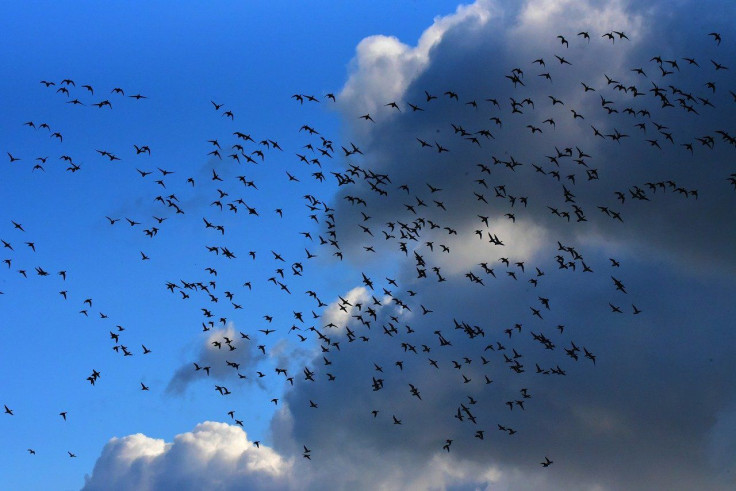Climate Affecting Bird Migration Timing At 'Continental Scale', Study Finds

KEY POINTS
- Bird Migration evolved as a result of changing climates
- Researchers analyzed 24 years of data on bird migration patterns to see possible changes in response to curent climate change
- The most apparent changes in migration timing occur in regions that are warming most rapidly
- During spring, birds pass certain stops earlier than they would have 20 years ago
- Being out of sync with the environment could prove problematic for birds' health
Migratory birds play significant roles in the ecosystems they move in, from eating insects to spreading seeds. According to the researchers of a new study published in Nature Climate Change, bird migration evolved as a result of changing climates. They describe it as a “global phenomenon” that affects billions of birds each year.
As such, it is only natural that birds’ movements also change in accordance with the changing climates, but how they respond to sudden and extreme changes such as the one we are experiencing now has been a mystery until now.
In order to see how migration patterns are changing in response to climate change, the researchers looked at 24 years of radar data from the National Oceanic and Atmospheric Administration (NOAA) through Amazon Web Services and used cloud computing to synthesize their findings. Without cloud computing, it would have taken them over a year to process the data. However, because of it their computations were done in just 48 hours.
Scientists from the University of Massachusetts also created new algorithms to remove weather data, something that has been a major problem for biologists for decades because in the past someone had to look at the data to determine whether the radar image was showing birds or rain. With MistNet, an artificial intelligence system can remove the rain from the radar images automatically.
Interestingly, the researchers found migration timing and temperature to be closely aligned, with the most apparent changes in migration timing occurring in the regions that are warming most rapidly.
Specifically, they found that the spring migrants are now likelier to pass certain stops earlier than they would have 20 years ago. At northern latitudes, the researchers found a 1.5-day shift per decade. While this does not seem like much, we must keep in mind that this is not just a single bird species that changed its behavior but the entire system of migratory birds. Furthermore, any observable change for a diverse bird population is already significant.
On the other hand, fall migration was rather tricky to study as they were surprised to find little changes in fall migrations. It is possible that this is because, during the fall, there is less pressure to reach wintering grounds and the birds are not competing for mates.
“To see changes in timing at continental scales is truly impressive, especially considering the diversity of behaviors and strategies used by the many species the radars capture,” study lead Kyle Horton of Colorado State University said.
That said, Horton notes that their findings do not necessarily suggest that the birds are keeping pace with climate change. However, they do have implications for future bird migrations. Since the birds rely on the blooming of vegetation and emergence of insects at particular locations and times when they travel, as those factors change due to climate change, the timing becomes out of sync with bird migration. This could, then, prove problematic for the birds’ health, even if the changes appear to be subtle.
The study is one of the first to look at how climate change is affecting bird migration patterns at a continental scale. The researchers are planning to include Alaska in their future analysis, since it is experiencing the most impacts of climate change compared to the lower 48 states.
© Copyright IBTimes 2024. All rights reserved.






















